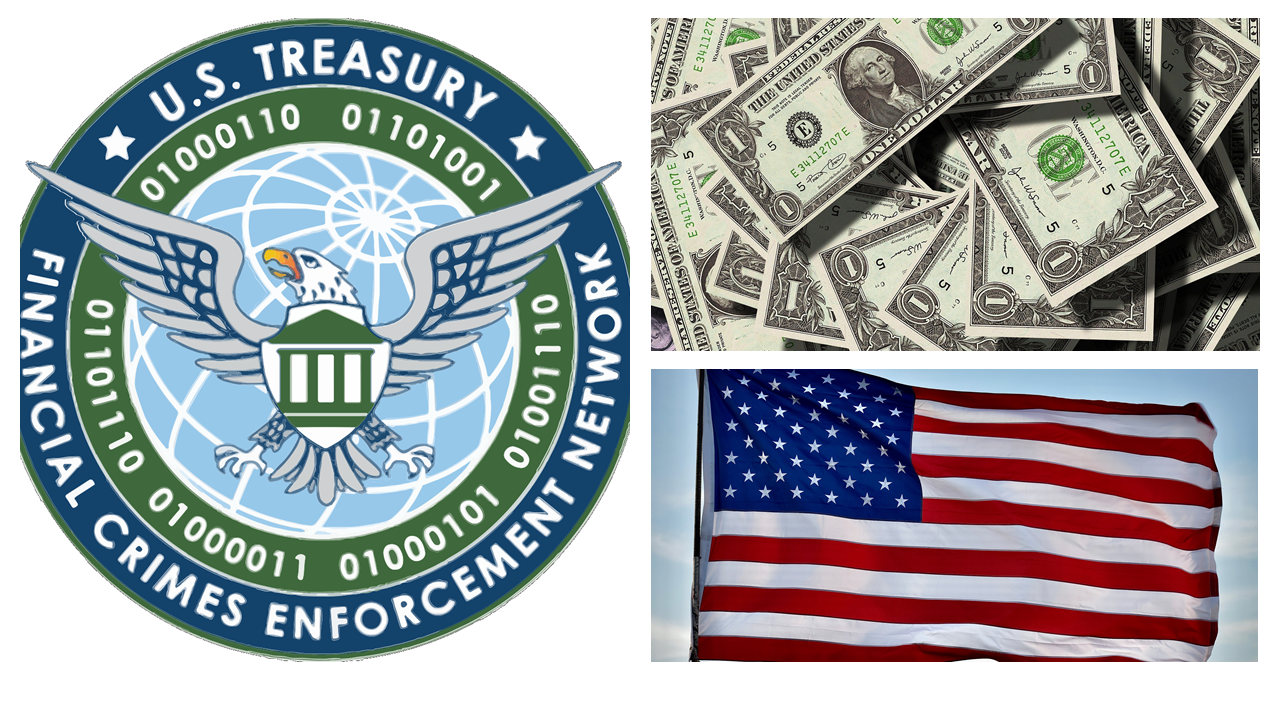I applaud AML Intelligence for organizing such a strong conference agenda and I’m honoured to be included alongside such an impressive list of speakers.
I look forward to not only sharing my perspective on the critical role of public-private collaboration in combatting financial crime but also hearing, and learning, from the experiences and viewpoints of my fellow presenters.
As FINTRAC’s Director and CEO, I have seen firsthand the significant positive impact that these partnerships can have on the effectiveness of a national anti-money laundering and anti-terrorist financing regime.
Since launching our first public-private partnership (PPP), Project PROTECT, in 2016 to combat money laundering associated with human trafficking for sexual exploitation, Canada’s framework for these initiatives has become a powerful platform for effectively combatting illicit financial activity. These types of partnerships can increase the flow of financial intelligence between relevant stakeholders. Through dedicated commitment and active engagement from participants, they can also significantly raise awareness of financial crime and lead to the successful disruption of criminal networks.
- Background
Before going too far into FINTRAC’s experience with PPPs, I will briefly explain FINTRAC’s role within Canada’s AML/ATF Regime. This will be helpful in understanding how we have set up our partnership model in Canada and FINTRAC’s central role within it.
The Financial Transactions and Reports Analysis Centre of Canada – or FINTRAC – is Canada’s financial intelligence unit and AML/ATF regulator.
As one of 13 federal departments and agencies that play a key role in Canada’s regime, FINTRAC was created in 2000 under the Proceeds of Crime (Money Laundering) and Terrorist Financing Act to facilitate the detection, prevention and deterrence of money laundering and the financing of terrorist activities in Canada while respecting the privacy of Canadians and the Canadian Charter of Rights and Freedom.
Within Canada’s AML/ATF eco-system, FINTRAC serves two key functions: ensuring compliance with Canadian legislation on money laundering and terrorist financing and producing financial intelligence to support investigations of money laundering and terrorist financing.
As Canada’s AML/ATF regulator, we are responsible for ensuring the compliance of more than 24,000 businesses that have requirements under the Proceeds of Crime (Money Laundering) and Terrorist Financing Act, including financial institutions, casinos, money services businesses and others. These requirements include reporting certain types of financial transactions, such as international electronic funds transfers, large cash transactions, large virtual currency transactions and suspicious transactions.
In response to evolving risks, the list of reporting entity sectors has expanded over the years to better capture emerging business sectors. For example, over the past few years, regulatory amendments added obligations for foreign money services businesses and virtual currency dealers.
In addition, Canada’s recent federal budget proposed new regulations that will bring businesses offering crowdfunding platform services and certain payment service providers into Canada’s regime. As a result, businesses subject to Act represent a comprehensive cross-section of Canada’s financial landscape.
With the reporting that we receive from businesses subject to the Act, and when appropriate thresholds are met, FINTRAC – as Canada’s financial intelligence unit – produces actionable financial intelligence for Canada’s police, law enforcement, national security agencies, and international counterparts in support of their money laundering and terrorist financing investigations.
Over the past year, FINTRAC generated more than 2,000 disclosures of actionable financial intelligence in support of investigations related to money laundering, terrorist activity financing and threats to the security of Canada.
In 2020–21, our financial intelligence contributed to 376 major, resource intensive investigations, and many hundreds of other individual investigations at the municipal, provincial and federal levels across the country.
Often based on hundreds or even thousands of financial transactions, our disclosures include financial information on an individual or a network of individuals, or entities suspected of laundering money or financing terrorist activity. Disclosures can make links between individuals and businesses that have not been identified in an investigation, and can help investigators refine the scope of their cases or shift their sights to different targets. They can also be used by law enforcement to put together affidavits to obtain search warrants and production orders.
In addition to tactical level disclosures, FINTRAC produces strategic financial intelligence that informs Canada’s security and intelligence community, regime partners and policy decision-makers, Canadians, and our international counterparts about the nature and extent of money laundering and terrorist activity financing in Canada and throughout the world.
- FINTRAC and PPPs
Now that I’ve outlined FINTRAC’s mandate and role, I’ll discuss more specifically Canada’s public-private partnerships in relation to money laundering.
Our model establishes a channel of communication between the private and public sectors to maximize the use of FINTRAC’s financial intelligence products. The goal of this model is to disrupt the financial crimes with a significant societal impact.
By working closely with Canadian businesses, police and law enforcement agencies, FINTRAC has been effective in following the money to identify potential subjects, uncovering broader financial connections and providing intelligence that advances national project-level investigations. In 2020-21, FINTRAC was able to provide 602 disclosures of actionable financial intelligence to Canada’s law enforcement agencies in relation to our existing public-private partnerships. Approximately 80% of these disclosures were proactively instigated by FINTRAC.
Our current partnerships target money laundering associated with specific criminal activity and include the following:
Project PROTECT, a Bank of Montreal-led initiative on domestic human trafficking in the sex trade.
Project CHAMELEON, an HSBC-led initiative on romance scams.
Project GUARDIAN, a CIBC-led initiative on the illicit trafficking of fentanyl.
Project ATHENA, with RBC/HSBC as leading “core partners” on significant money laundering activity; in particular underground banking and professional money laundering.
Project SHADOW, a Scotiabank-led initiative on online child sexual exploitation.
In Canada, these projects have generated clear successes with real world outcomes in disrupting criminal activity.
Tangible results achieved with support from the financial intelligence generated through our public-private partnerships include:
In July 2020, the Ontario Provincial Police recognized FINTRAC’s assistance in an investigation which led to the dismantling of a commercial sex trade organization operating in nine Ontario cities. Seven persons were charged with 32 criminal offences, including laundering the proceeds of crime.
In September 2020, the Sûreté du Québec recognized FINTRAC’s assistance in an investigation that led to the dismantling of a vast romance fraud network that collected $2.3 million from approximately 50 victims, many of them senior citizens, over a number of years. Twelve persons were charged with fraud and concealment, including the head of the network and two accomplices.
In August 2020, the RCMP recognized FINTRAC’s assistance in the investigation of Genaxx Pharma, Dufore Technologies and their owner. Charges included the selling of chemical products knowing they will be used to produce fentanyl, illegal importation, various firearms offences, and possession of the proceeds of crime.
These outcomes are the most gratifying part of our work and FINTRAC’s intelligence efforts more generally. Financial intelligence, when exploited to its fullest potential, can help rescue victims from heinous criminal acts, disrupt criminal networks causing substantial social harm, and provide a measure of justice for victims of crime who are often from the most vulnerable populations of our society.
- PPP Best Practices
Each of the five public-private partnerships in which FINTRAC has participated has built on the lessons learned and best practices established in previous projects. Contained within our model are a few best practices that have increased the agility of the Canadian regime in proactively targeting sophisticated crime.
Many of these best practices have also been recognized by the Global Coalition to Fight Financial Crime, a public-private coalition that draws together experts from across the AML/ATF eco-system in order to provide practical recommendations to enhance the AML/ATF framework. As part of FINTRAC’s commitment to promoting innovation in international efforts to combat financial crime, I am currently co-chairing the Law Enforcement/FIU Sub-Group of the Global Coalition to Fight Financial Crime’s Effectiveness Expert Working Group.
I would like to conclude my remarks today by going over these recognized best practices and I would encourage you to consider how they may be adapted to your own jurisdictions. These best practices include:
- Objectives that are practical, relevant, and measurable.
By setting objectives with input from all members and with a consideration of societal priorities, committed support from all partners can be retained. Additionally, by framing objectives in a manner that allows for clear measures of success, the effectiveness of the partnership can be easily demonstrated, which will ensure its future sustainability and expansion.
- Clear legislative and governance frameworks.
Ground models in existing authorities to ensure ease of implementation, respect for established mandates, clear accountabilities, and the protection of personal information. Participation in the development of these partnerships should be voluntary for the private sector and not create new obligations. Further, governance models, and underlying legislative frameworks for partnerships should maintain a degree of flexibility and generality to allow for appropriate adjustment and adaptation in response to emerging financial crime threats, new financial technology, and changing public priorities.
- Third, when organizing a PPP it is important to have appropriate depth and breadth of membership, and meaningful roles assigned to each member.
At a minimum, an effective partnership must include relevant subject matter experts from law enforcement, financial intelligence units, regulators and major reporting entities, as well as strong engagement from senior leaders within these organizations. However, in order to ensure a diversity of perspectives and information on the illicit financial activity targeted, the inclusion of relevant sectors beyond traditional stakeholders is also beneficial. This includes NGOs, other government departments and agencies, and technology companies. To ensure dedicated commitment from private sector members, these entities should be given meaningful roles and responsibilities within the model, including positioning these entities as leaders of PPP projects/working groups. In Canada, for example, each of our five active PPPs is led by one of Canada’s largest banks.
Fourth, partnerships should target crimes with greatest societal impact and/or on which financial intelligence can have the greatest impact.
A dedicated and ongoing commitment from all partners, including subject matter experts and senior leaders in participating organizations, is a key element to achieving success. Focussing the work of a partnership on illicit financial activity that has a large-scale societal impact and/or on which financial intelligence can have the greatest impact promotes partner commitment and engagement by making apparent the importance and utility of the work undertaken. This best practice is well-demonstrated in FINTRAC’s current public-private partnerships which are centred on particularly heinous crimes with a large negative impact on Canadian society such as human trafficking for sexual exploitation, online child sexual exploitation, and the trafficking of fentanyl and other opioids.
Finally, within a public-private partnership it is important to share information at both tactical and strategic level.
Sharing strategic-level financial intelligence supports broad awareness, by identifying trends, typologies and risk indicators of illicit financial activity related to specific predicate offences. In the context of a public-private partnerships this may include targeted guidance documents for the private sector and focussed training provided by financial intelligence units and law enforcement to other participant organizations. At FINTRAC, this includes the publication of operational alerts which include robust indicators of money laundering associated to the criminal activity targeted by the public-private partnership.
We have also established the Public-Private Collaboration Steering Committee, which FINTRAC co-chairs with Scotiabank, and which comprises an executive committee that also includes representatives from RBC and HSBC. At a strategic level, the Public-Private Collaboration Steering Committee focuses on establishing shared priorities, enhancing information sharing between businesses, and between the public and private sectors, and leveraging technology to increase automation, strengthen analytical capabilities and enhance the financial intelligence that is disclosed to police, law enforcement and national security agencies.
Likewise, the sharing of tactical financial intelligence from reporting entities to FIUs, and subsequently from FIUs to law enforcement, can help advance ongoing financial crime investigations and identify new leads for investigation. Providing feedback to reporting entities on examples of transaction reporting with significant intelligence value that supported successful law enforcement outcomes is also a key component of a successful partnership model. In addition to sharing of financial intelligence, PPPs can serve as a platform for sustained collaboration between public sector and private sector partners on the development and testing of innovative technological solutions.
While these best practices are ones that we at FINTRAC, and several of our partners in the Global Coalition to Fight Financial Crime, believe would provide a sound basis for the formation of a highly effective PPP, we acknowledge that they are not exhaustive. Specific jurisdictions may develop innovative approaches that ensure success in their own national context and I encourage you to share your views on best practices so that your partner organizations, including FINTRAC, can continue to refine and improve their approaches.
- Conclusion
Again, thank you so much for the opportunity to speak to you here today on this important topic. I hope that my comments will spark ideas that you can implement in your own work as we all continue this effort towards developing and sustaining effective partnerships to bring criminal actors to justice and prevent further victimization of our citizens. Through effective collaboration we can achieve incredible results. Thank you and all the best the remainder of your conference.
Follow us on:
Share us on:









